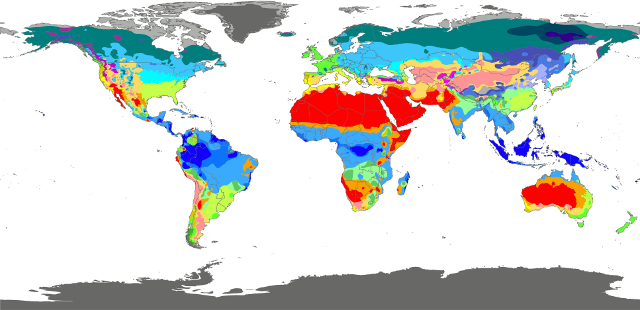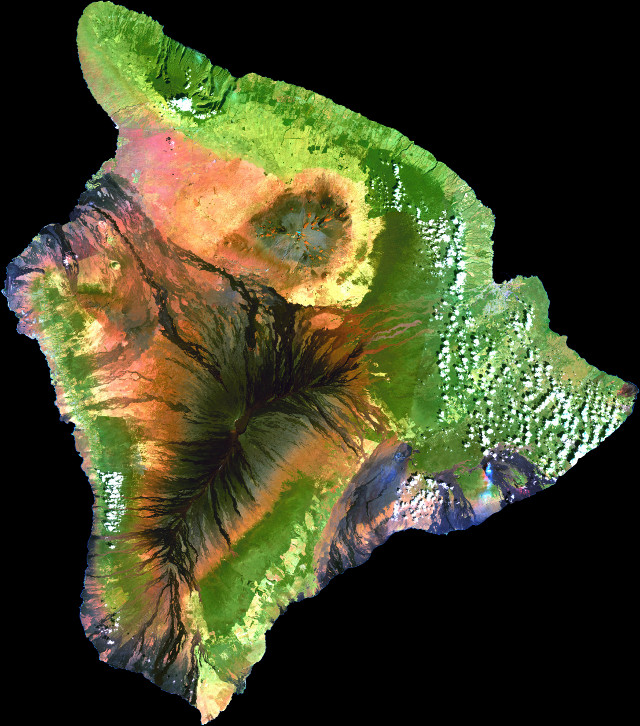The Köppen climate classification defines a number of different climate types.
Group A (Tropical Humid)
- Tropical Rainforest
- Tropical Monsoon
- Tropical Wet and Dry / Savanna
Group B (Dry)
- Steppe
- Desert
Group C (Mild Mid-Latitude)
- Dry-Summer Subtropical / Mediterranean
- Humid Subtropical
- Maritime Temperate / Oceanic
- Temperate Highland Tropical with Dry Winters
- Maritime subarctic / Subpolar Oceanic
Group D (Severe Mid-Latitude)
- Hot Summer Continental
- Warm Summer Continental / Hemiboreal
- Continental Subarctic / Boreal / Taiga
Group E (Polar)
- Tundra
- Ice Cap

A map of the world coloured using the extended Köppen-Geiger scheme which features twenty-nine climate types.
Hawai’i, the largest of the Hawaiian islands, features ten of the thirteen Köppen Climate Types.
At the summits of Mauna Kea and Mauna Loa the climate type is Polar Tundra. Below the summits of the Hawaiian mountains are narrow bands of Continental Subarctic climate, and below that a region of Warm Summer Continental climate. The largest area of Hawai’i is covered by Hot Summer Continental climate.
Moving towards the coast there are regions of Tropical Rainforest, Tropical Wet and Dry, Humid Subtropical and even a tiny region of Tropical Monsoon climate. Towards the north-east of Hawai’i there are even small regions of Steppe and Desert climate.

A false-colour image of Hawai’i showing the different types of land use.